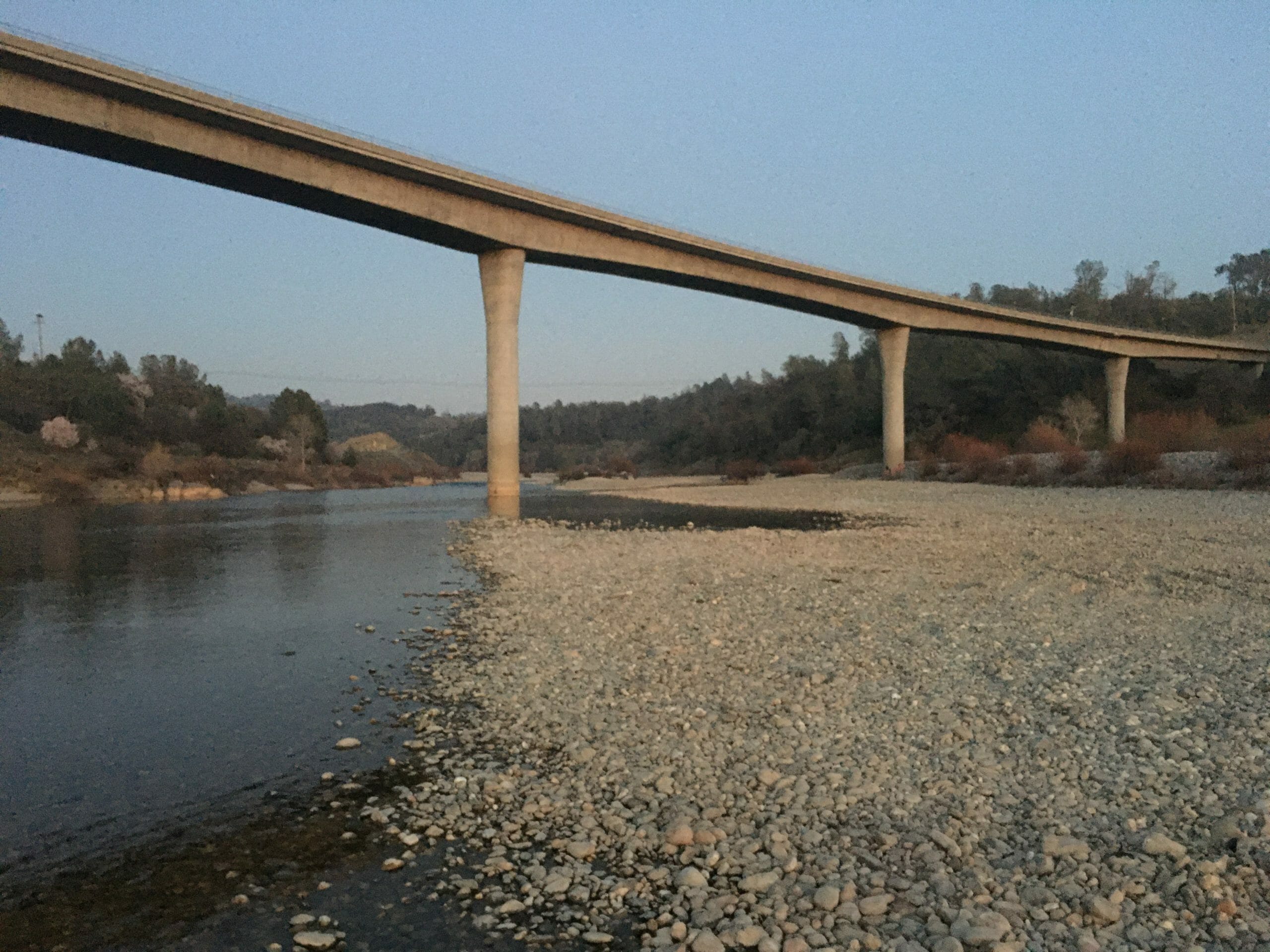In praise of urban trout streams
The thought occurred to me while I was fishing under the Highway 20 bridge over the lower Yuba River in California’s Gold Country.
To reach the water I had crossed a floodplain so altered by quarrying, mining and off-road vehicles that it more resembled a moonscape than a functional component of a major river.
Traffic rattled and buzzed overhead. Chunks of rebar-ribbed concrete fraternized with the cobbles, in and out of the water.
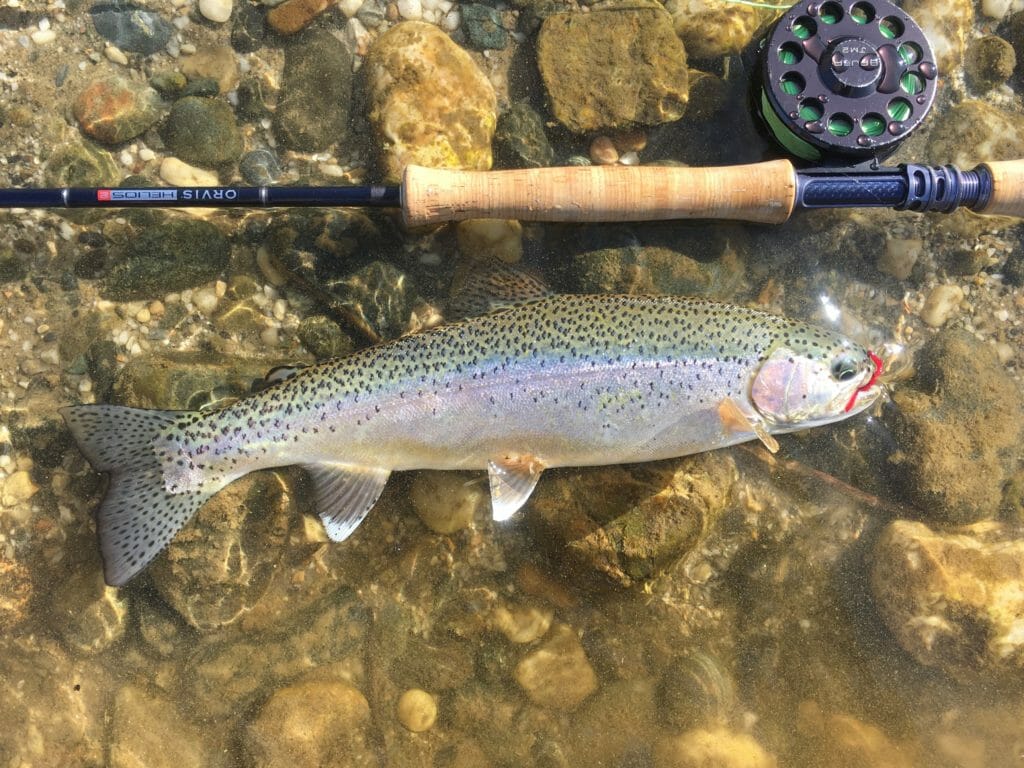
But the Yuba’s wild trout, famous for their beauty and vigor, couldn’t have cared less about the less-than-wild atmosphere. I persuaded a few to take my flies and to loll briefly in their exquisite finery next to the bank.
And the thought was brilliant in its simplicity and authenticity.
I had fished, over the past month, several trout waters with decidedly urban or industrial character. I caught nice trout in all of them, and came away impressed with the ability of O. mykiss to thrive almost anywhere the water is clean and cold enough—even if it looks gross.
The thought was: fishing is rewarding pretty much anywhere.
They’ll probably nominate me for a MacArthur Fellowship.
The Yuba
If you want a semi-wilderness setting while fishing, you can find it on the Yuba’s upper reaches. But this river is better known for the reach between Englebright Dam and its confluence with the Sacramento River, which hosts runs of salmon and steelhead. Trout Unlimited and other conservation groups have worked for years to improve flows and habitat conditions here.
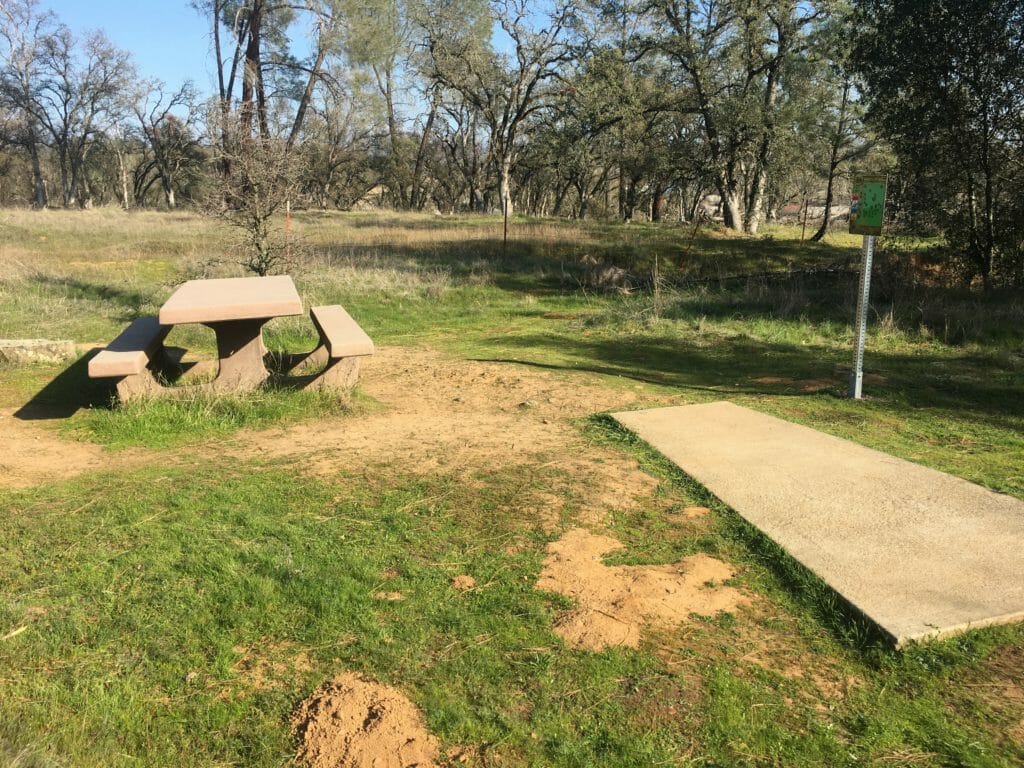
Thick rainbows in the 12 to 16 inch class are the main attraction here. To get to them I had to negotiate a steady stream of disc golfers, some dreadlocked and some skinheaded, toting rucksacks and other paraphernalia among cottonwoods and scraggly oaks like characters from a Tolkein fantasy. Signs urged visitors to watch for rattlesnakes.
I waded in at the tail end of the Skwala stonefly hatch, hoping to see noses everywhere, slap big ugly dry flies on the water, and set on trout slashing and gorging on the winged protein packs.
Alas, the Skwalas were few and the noses infrequent. I slapped big ugly dries on the water, all right. I’m pretty good at slapping flies of any size on the water. But nothing came of it, except for a few wind knots.
So I went to a nymph rig. And the Yuba trout obliged.
I landed three. They all went airborne, bounding like Simone Biles on the floor exercise. It was awesome.
I quit when I lost my flies, not for the first time, to a hunk of concrete, trying to tempt a hefty trout finning on its far flank.
The Lower Sac
It’s mystifying to me why the Lower Sacramento River doesn’t get more love from anglers. It’s gotta be one of the top three tailwaters in the U.S. It offers salmon and steelhead and striped bass and shad, and insane mayfly and caddis hatches. Its resident rainbows average 16 inches and have the girth and raw power of The Undertaker.
And most of this river is fishable every day of the year.
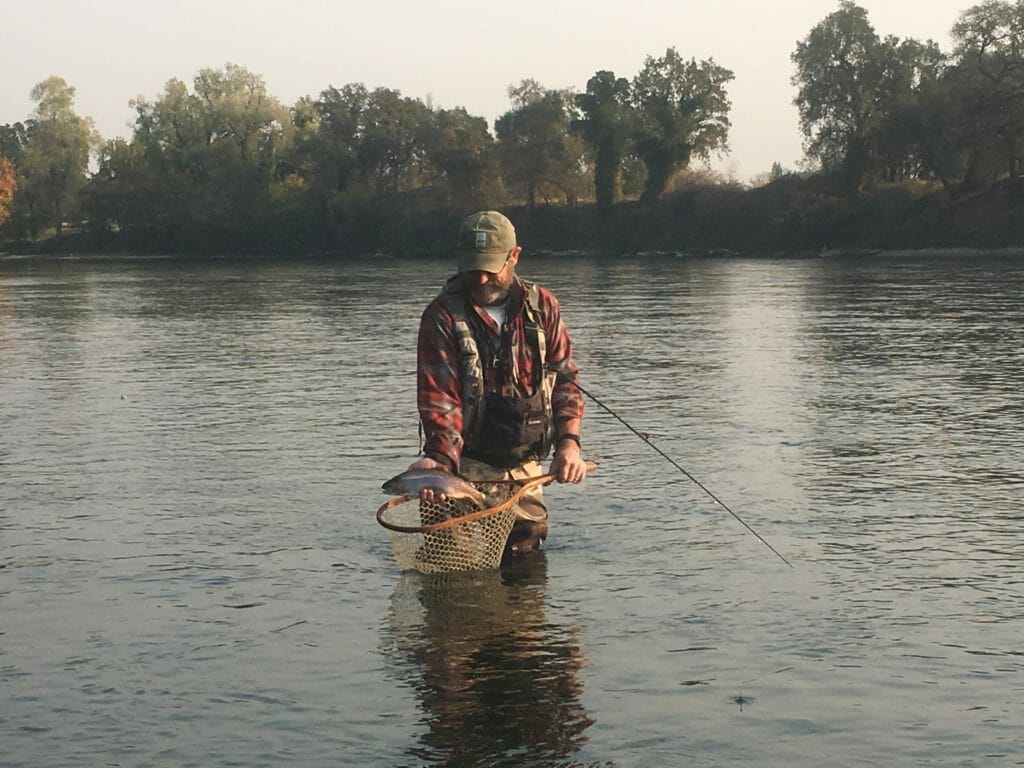
TU is working to conserve this amazing fishery through a combination of policy, partnerships, and restoration projects. Floodplain restoration: check. More fish-friendly flow requirements for dam operations in the tributaries: check. TU’s Shasta Trinity Cascade Chapter spearheading local cleanups and habitat restoration work: check.
On a balmy day in January, I ambled down to a wadable stretch of the river, committed to swinging flies. Most folks float this water and fish nymphs under an indicator, for good reason. But if you want to wade, there is swingable water everywhere.
A soft-hackle caddis and a micro mayfly did the job. But I went one-for-four on hookups over a couple of hours. In fairness to me, after the first fish my hands shook for the remainder of the session.
That trout was, um, large. When I set on it, it moved slowly at me. About ten feet away it saw me, and I watched a huge creamy slab spin and plow off, making a furrow on the water and taking most of my fly line off the reel.
I abstractedly rigged up a 5 wt for that session instead of the go-to 6 wt, and now I paid for it. Moving the trout out of the main current was a fantasy. But after a minute or so it eased back in my direction.
I furiously stripped line, and when the trout bulldogged again, I began trying to get it on the reel. At that moment the trout rocketed off into the current once more. Had I tightened my drag perhaps I would have been a hero.
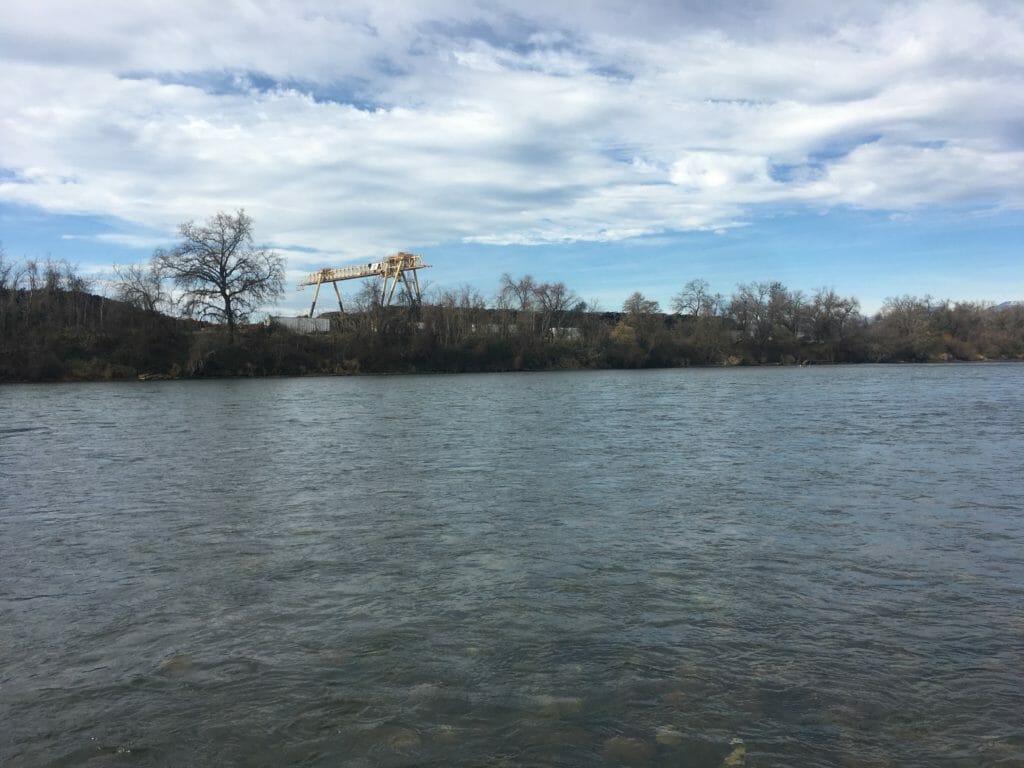
But I had not. The line did its best portrayal of a bird’s nest around my reel, came tight, and parted ways with my fly.
I watched a big crane move massive logs in the small city-sized lumber yard on the other side of the river, on a river hemmed in by industry, housing and agriculture for most of its length. Eventually I drew another breath.
The San Lorenzo
The San Lorenzo begins in the mountains above Santa Cruz and exits the land at the east end of one of the country’s most famous rollercoasters. This river has steelhead, and you can fish it only during the winter steelhead season. While you might hook up to an adult steelhead here, the chances are better you’ll catch juveniles.
As the San Lorenzo flows into the city, it gets increasingly less lovely. To get to its lowest reach, you walk over the flood control berm next to a skate park.
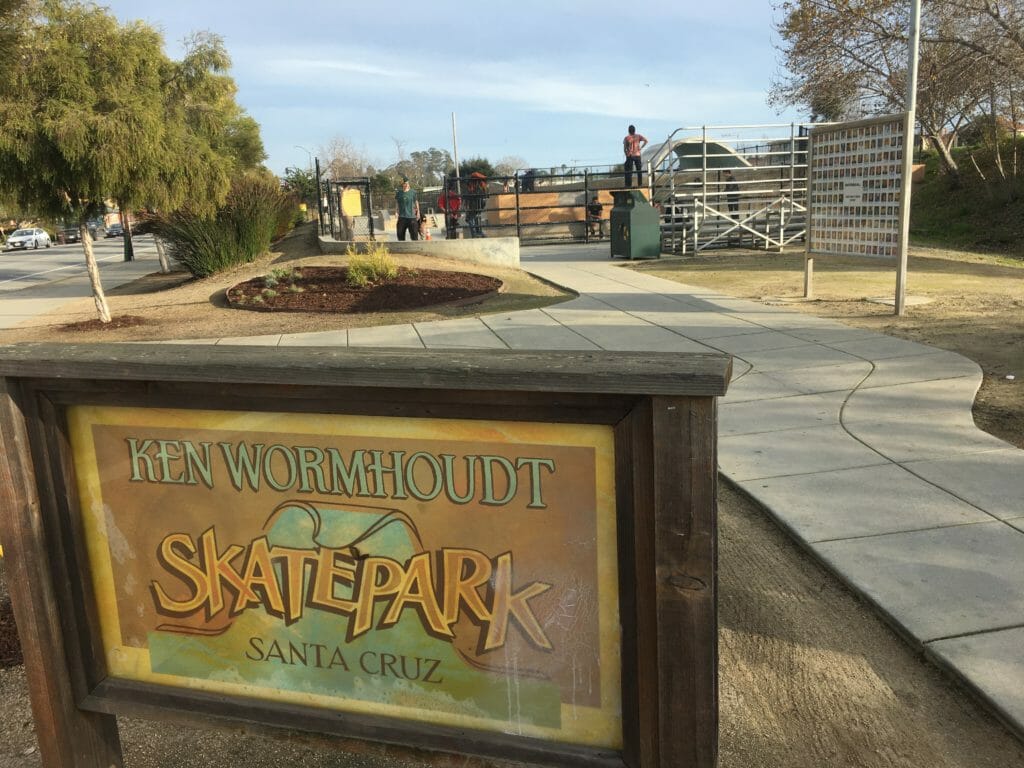
As I approached the river on another balmy January day (this winter has been a joke around here), I got blasted by an eclectic mix of rap and thrash metal at a volume many times that of military aircraft taking off. The scratch of skate wheels and the expletives of skaters followed me to the water and kept me company there.
The water was dark and dirty. Across from me, rip-rap adorned the bank. Homeless people accosted cyclists and pedestrians on the street above. The tide was outgoing and a weak current prevailed. I waded in, past an assemblage of abandoned clothing, and tried to pull off a part-drift, part swing technique.
The fish were unimpressed.
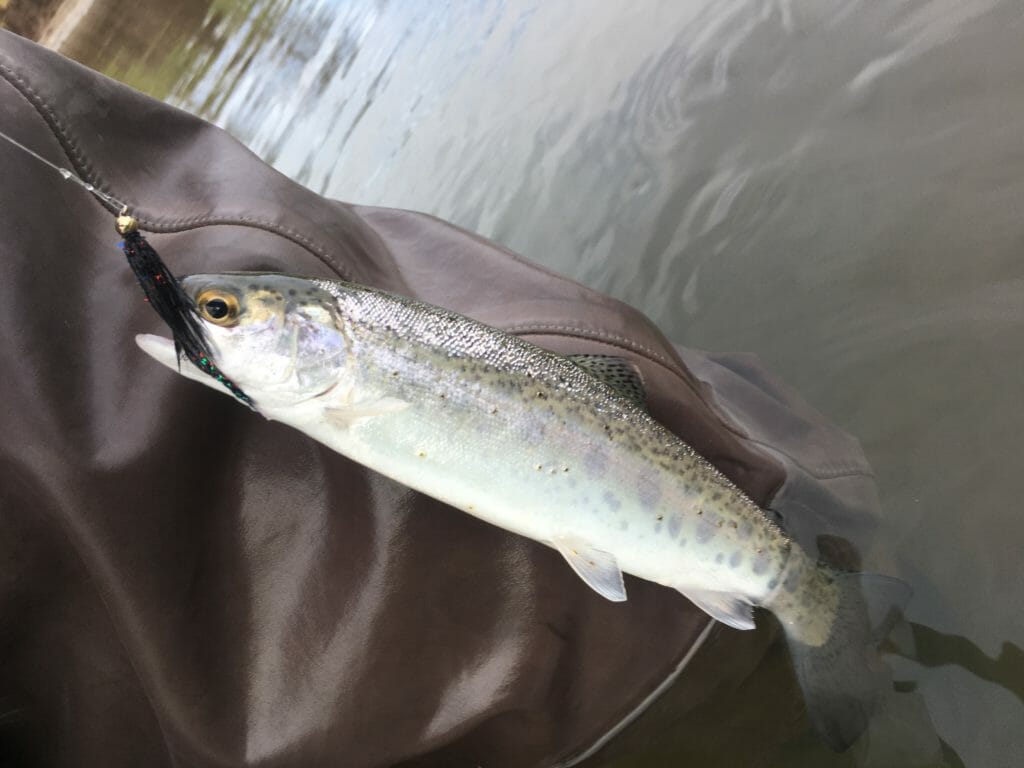
At length I noticed a few rises, for invisible bugs. And then, a half-hearted take. I kept working, with renewed interest.
It was while lifting the rod tip off the water to initiate another cast that a trout too young to know better abandoned caution and grabbed. It was silvery and perfect.
A family had set up a dozen yards upstream of me. They wagged baitcasters and bobbers big as baseballs plopped on the water. The father told his two kids to watch them.
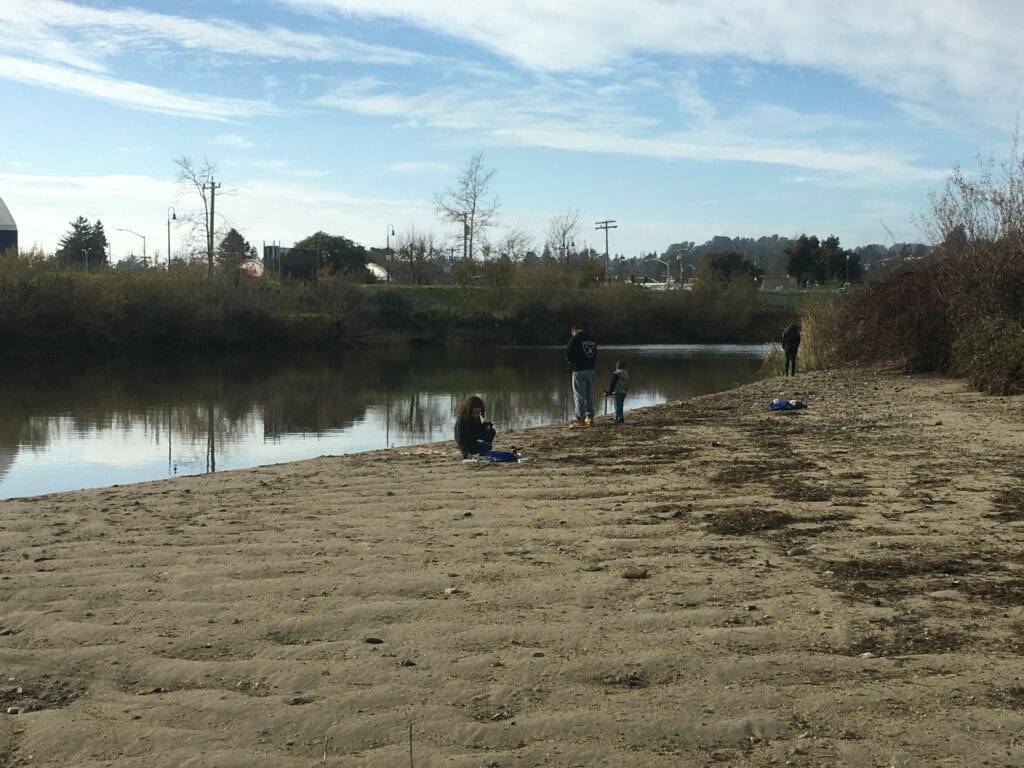
But everyone knows bobbers are boring. Their youngest kid soon took to watching me instead of his. I lifted the trout so he could see it. A big smile lit his face. He ran back to his father and tugged at his leg.
They looked over at me, and I waved them down to my spot. “Try here,” I told them. “It worked for me.”



